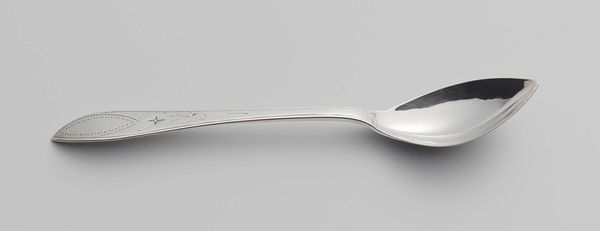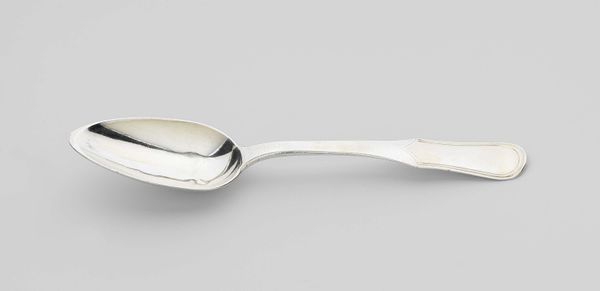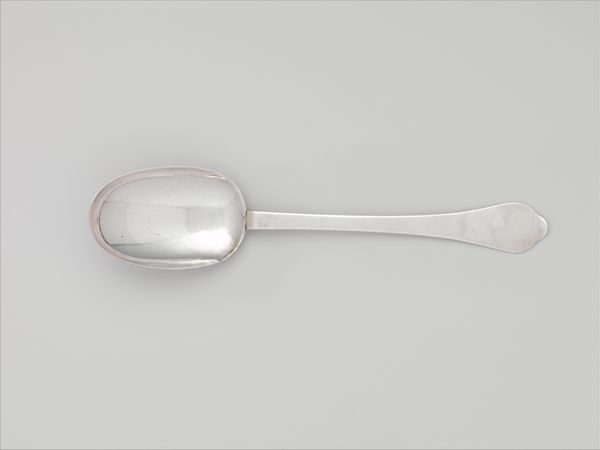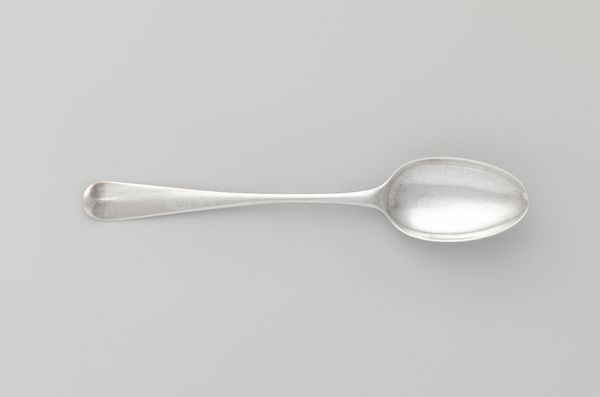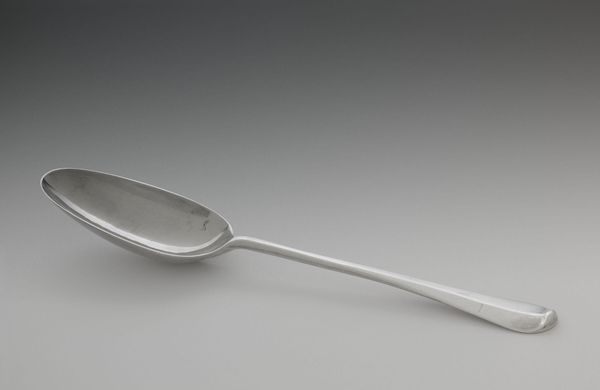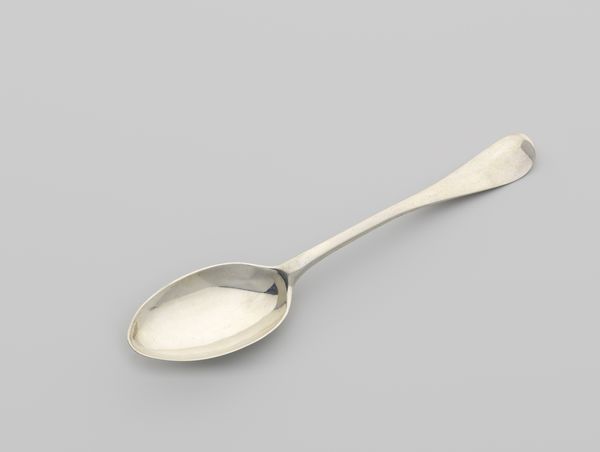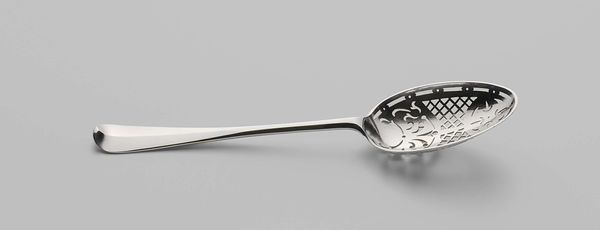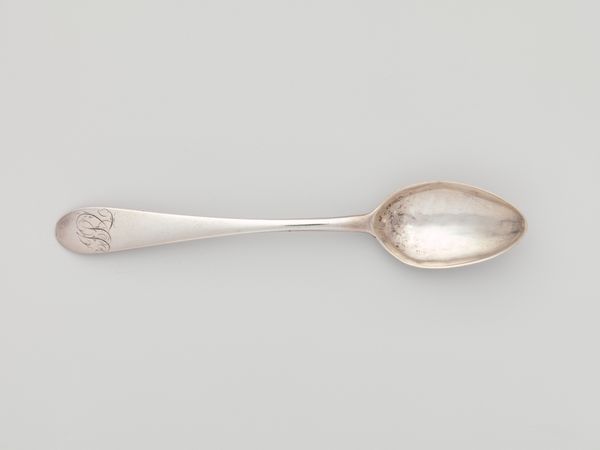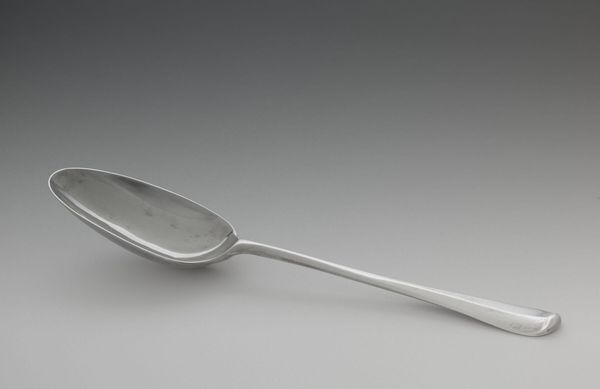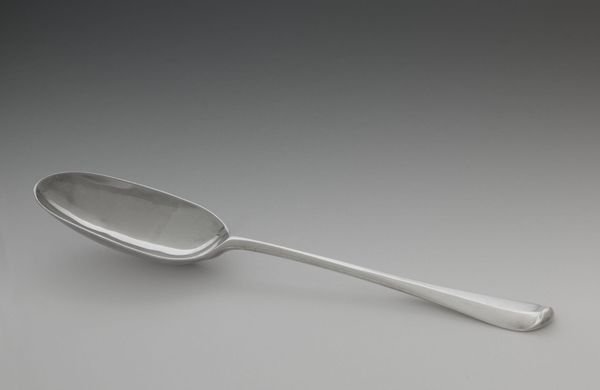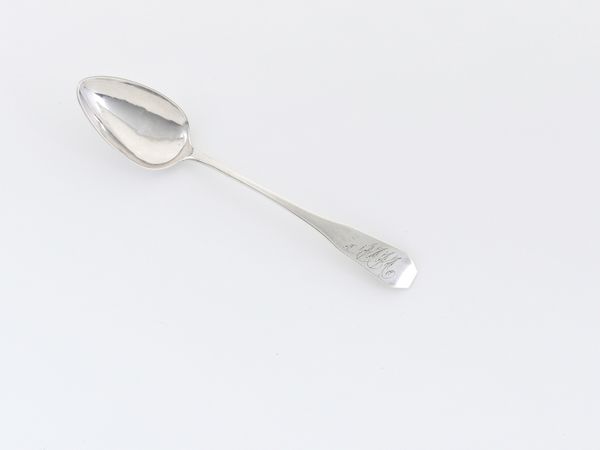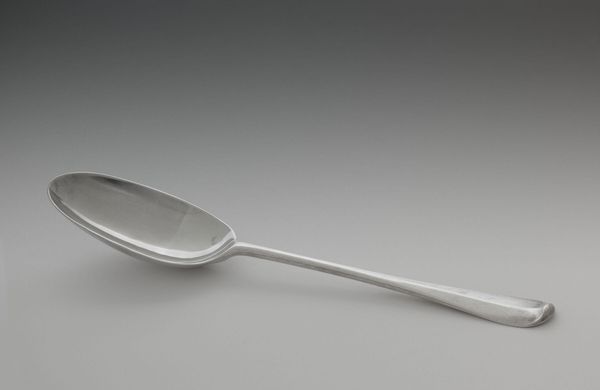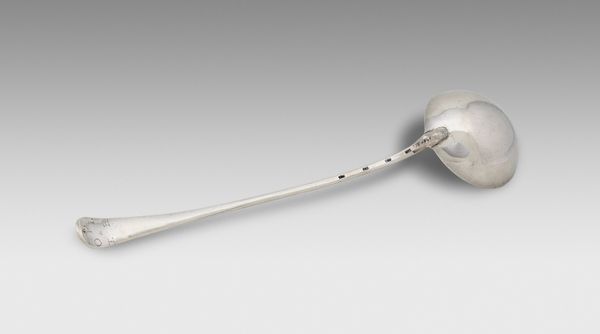
silver, metal
#
silver
#
metal
#
arts-&-crafts-movement
#
decorative-art
Dimensions: 19.1 cm (7 17/32 in.)
Copyright: Public Domain
Curator: Look at the streamlined elegance of this object. "Spoon," created between 1903 and 1904 by Charles Robert Ashbee. Crafted from silver and metal, it resides here at The Art Institute of Chicago. Editor: My immediate reaction? Delicate yet strong. The curve of the handle leading to the almost floral detail at the end is stunning. What's interesting to me is how such a small object holds such sophistication. Curator: The piece beautifully exemplifies the Arts and Crafts movement. Ashbee was deeply involved in the Guild of Handicraft, prioritizing handmade objects that offered an alternative to mass-produced items from the Industrial Revolution. Consider the spoon's form; it speaks to function while being inherently sculptural. Editor: Exactly! It’s fascinating how something so quotidian becomes elevated. Its functionality underscores social status. I mean, who owned this? What sort of context made the production and ownership of such an object possible? This wasn’t just for stirring tea. This spoon served as an ideological statement. Curator: Its style is decorative, and I read its sinuous lines through the lens of Art Nouveau's influence on the Arts and Crafts movement. It transcends its practical purpose and attains almost symbolic weight. We can trace these stylistic tendencies and the craftsmanship present to see influences across cultural movements and into postmodern object theory. Editor: I like the comparison with the object theories. More importantly, who would have seen it, held it, and how does it play into ideas about gender roles or class structures prevalent at that time? It certainly provides insight into domestic culture and rituals, doesn’t it? These little things always tell much larger stories about life at the beginning of the 20th century. Curator: Indeed, the spoon exists not only as a testament to craftsmanship but also as a conduit for understanding aesthetic preferences and their intrinsic symbolic properties. Editor: I appreciate having the chance to really reflect on how even an everyday object embodies such potent historical and societal cues. Curator: It seems that its aesthetic construction gives insight into so many diverse modes of artistic and sociological inquiry.
Comments
No comments
Be the first to comment and join the conversation on the ultimate creative platform.
